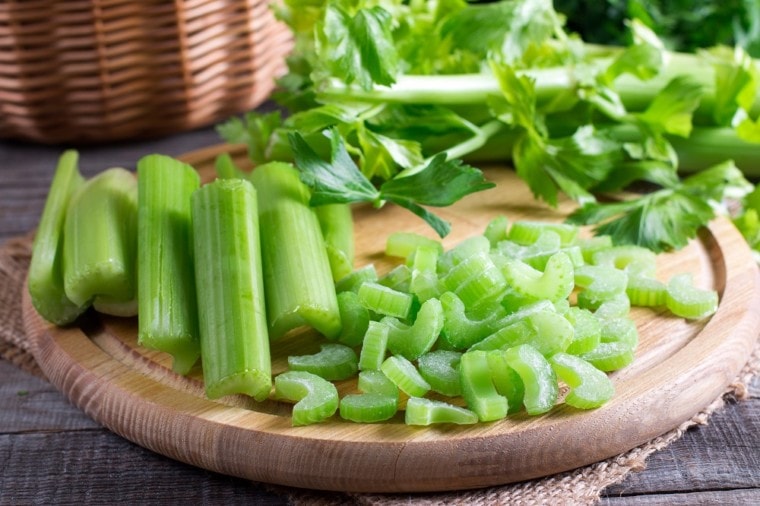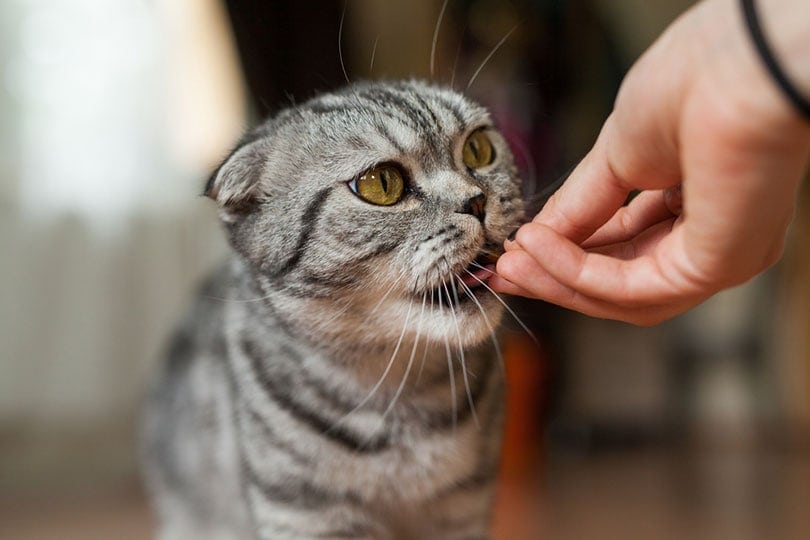
Click to Skip Ahead
How many people remember being told to eat their celery because it is healthy? Celery provides plenty of nutritional value, making it an excellent addition to almost anyone’s meal. But what about your cat? Can he eat celery?
Yes, your cat can eat celery, and it can provide nutritional benefits for felines. However, it is essential to take proper care and consideration when feeding celery to your cat since his nutritional needs are different from yours. To learn how to serve celery to your cat best, keep reading below.
Can Cats Eat Celery Leaves?
Celery stalks are fine for cats to munch on, but what about celery leaves? If your cat nibbles on a leaf or two, there’s no cause for concern. However, eating too many celery leaves can lead to gastrointestinal upset, such as vomiting and diarrhea. In extreme cases, it may even lead to kidney failure. But why?
Psoralen Risks
Celery leaves contain psoralen. Psoralen 1 is a compound that have been reported in other species to cause unwanted effects such as increased skin sensitivity to UV exposure after topical exposure. If your cat ingests too many celery leaves, it is possible similar reactions could occur. If you are worried that your cat may have gotten into something he shouldn’t have, don’t delay reaching out to your vet.
Feeding Frequency
So, exactly how often can you feed celery leaves to your cat? For the most part, the frequency with which you can feed this to your cat will depend on your pet’s age, size, and health. Consult your vet to determine which amount is right for your cat. Generally, an occasional bite of celery should be fine.
When introducing celery to your cat, start slowly and offer them in moderation. If your cat exhibits signs such as vomiting, diarrhea, or other indication of gastrointestinal distress, stop feeding it to your cat.

Benefits of Celery
Celery is a healthy, fibrous vegetable that provides several health benefits. It is low in calories but high in nutrients, making it an excellent and nutritious treat for your pet. It is especially ideal for cats that need to focus on weight loss or maintenance. Additionally, celery is a high-moisture veggie, and snacking on it occasionally can help keep your cat hydrated.
Celery is a good source of essential vitamins and minerals as well. By feeding celery to your cat, you can provide the following:
How Much Celery Can You Feed Your Cat?
While celery is exceptionally healthy, it is still considered a treat for your cat. Cats are obligate carnivores, so the main source of their nutrition should come from animal-based food. An occasional snack from a plant-based food source is more than acceptable; however, it must be fed in moderation. Treats should be limited to 2%–5% of your cat’s diet, and should rotate regularly.
How to Introduce Celery to Your Cat
Rotating a new food into your cat’s diet requires time and patience. If you force something unfamiliar into your cat’s meals too quickly, it may cause gastrointestinal distress. Sometimes, your cat may be too wary of the strange food even to take a nibble. Therefore, proper introductions are critical.
To introduce celery into your cat’s meals, first, add a small amount to his normal food. A few shreds or minced pieces can be easily mixed with his kibble or wet food. This will allow you to monitor your cat’s reaction to the food in small quantities. If he experiences skin irritation or gastrointestinal upset, stop feeding him celery.

Celery Can Be a Choking Hazard
When feeding celery to your cat, it is vital that you are aware of the potential choking hazard. If the celery chunks are too large, they may become stuck in your cat’s throat and choke him. Likewise, the stringy pieces of celery skin may get lodged in his throat or intestines, potentially leading to an intestinal blockage.
To ensure that you feed celery to your cat safely, make sure all the pieces are chopped into tiny pieces. You can mince the celery or put it through a food processor to ensure the pieces are small enough for your cat to easily and safely swallow.
Which Veggies Are Safe for Cats to Eat?
Celery is not the only safe veggie for your cat to eat. In moderation, your cat can also enjoy the following:
When feeding any of these veggies to your cat, make sure that you remove seeds, stems, cores, pits, and rinds.

Which Fruits Are Safe for Cats to Eat?
Fruits can also be safely fed to your cat, but they require even more moderation due to the high sugar content. Some fruits that you can offer your cat include:
As mentioned with the veggies, remove seeds, stems, pits, cores, and rinds before feeding them to your cat.
Veggies and Fruits That You Should Not Feed Your Cat
There are some fruits and veggies that you should keep away from your cat under all circumstances.
Final Thoughts
Celery can be an excellent snack for your cat when prepared properly and fed in moderation. It is low in calories, loaded with nutrients, and high in water content, so it provides plenty of health benefits to your cat. Be wary of celery leaves and potential choking hazards when feeding celery to your cat; however, these issues are easily avoided. For more advice on feeding celery and other veggies to your cat, consult your vet.
Related Food Questions:
Featured Image Credit: Ahanov Michael_Shutterstock







